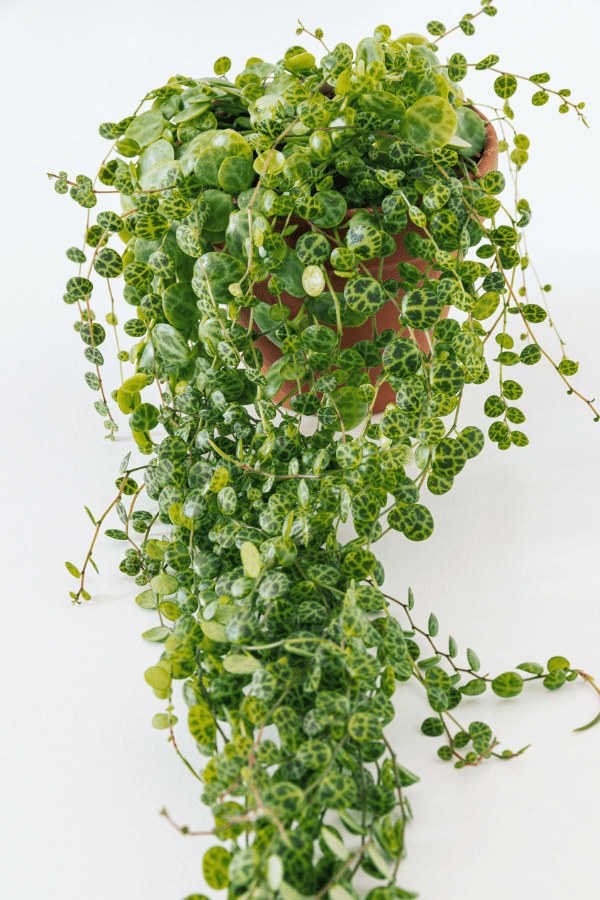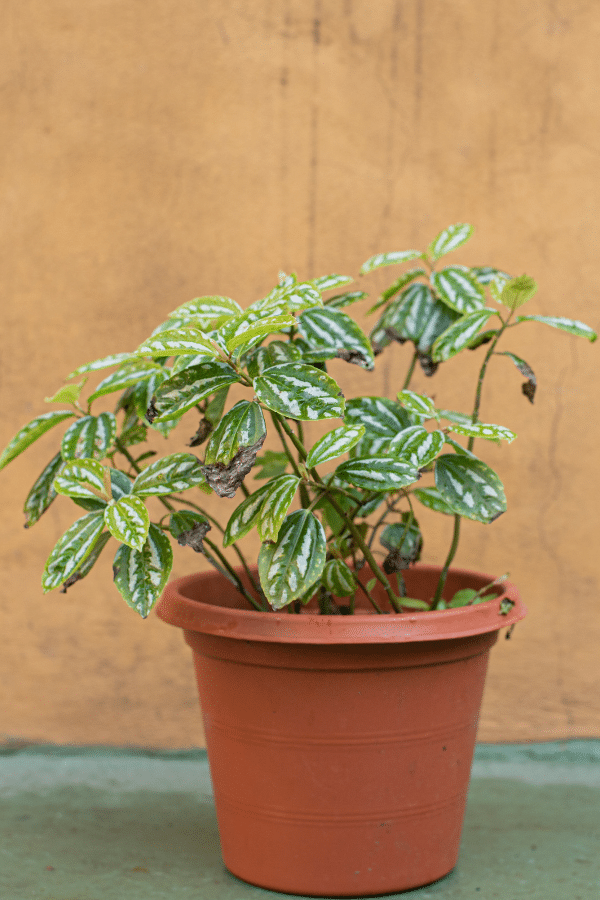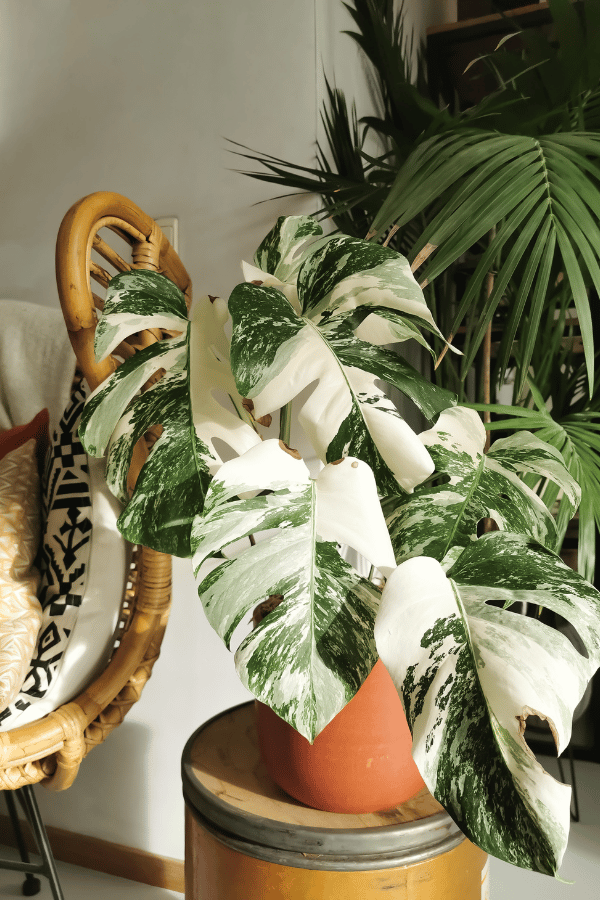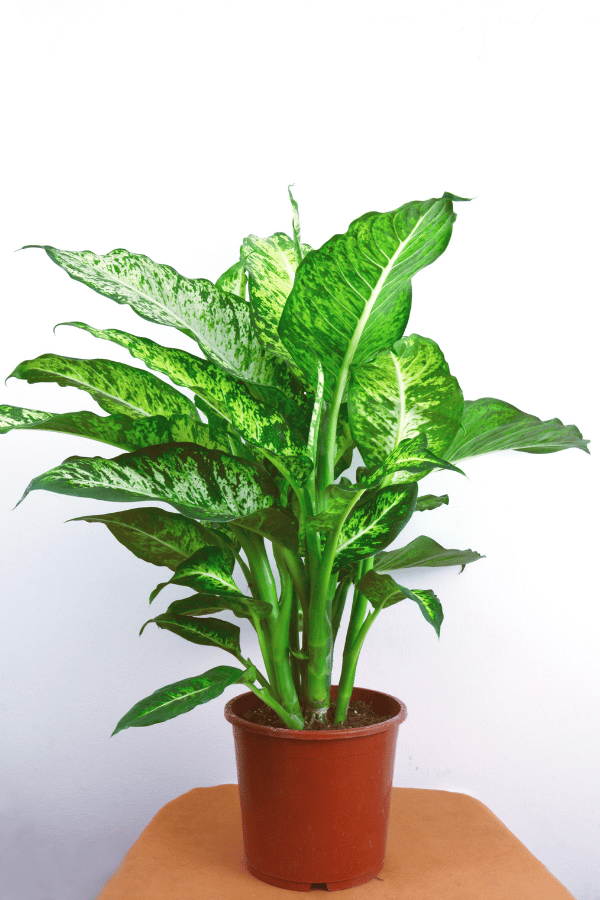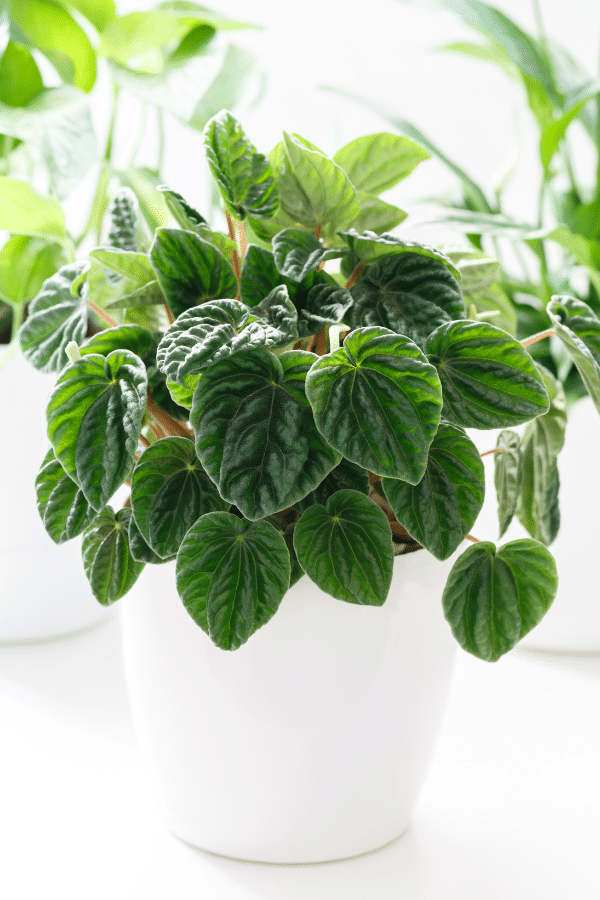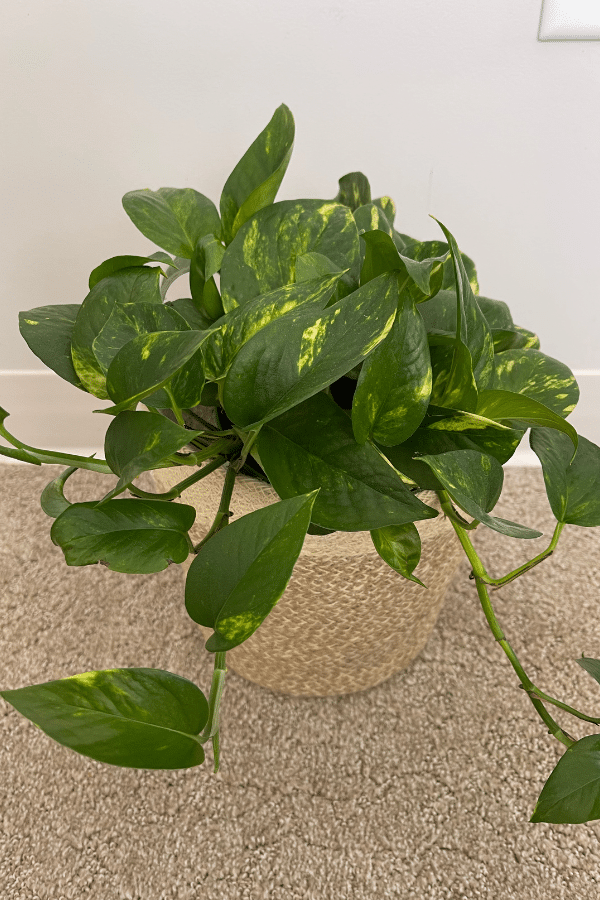African Milk Tree
Scientific Name: Euphorbia Trigona
Common Name: African Milk Tree
African Milk Tree care requires some work in order for it to thrive as a houseplant. An African Milk Tree houseplant may be for you if you want a unique houseplant that gives dimension with tall striking stems.
To give this Euphorbia plant the best care, it requires well-draining soil, allow the soil to dry out between waterings, provide it with bright indirect sunlight, temperatures ranging from 55-80F, and average humidity levels.
Quick Care Overview
| Common Name | African Milk Tree |
| Scientific Name | Euphorbia Trigona |
| Family | Euphorbiaceae |
| Origin | Central Africa |
| Growth Rate | Fast |
| Identification | Thick triangular stems with ridges |
| Height | Up to 6 feet tall |
| Soil | Well-draining soil |
| Water | Allow to dry out completely before watering |
| Temperature | 55-80F |
| Sunlight | Bright indirect sunlight |
| Toxic to Cats & Dogs | Yes |
| Toxic to Humans | Yes |
| Pests | Mealybugs, thrips, scale, spider mites |
| Diseases | Root rot, cork disease |
Below we will dive deep into this African Milk Tree care guide.
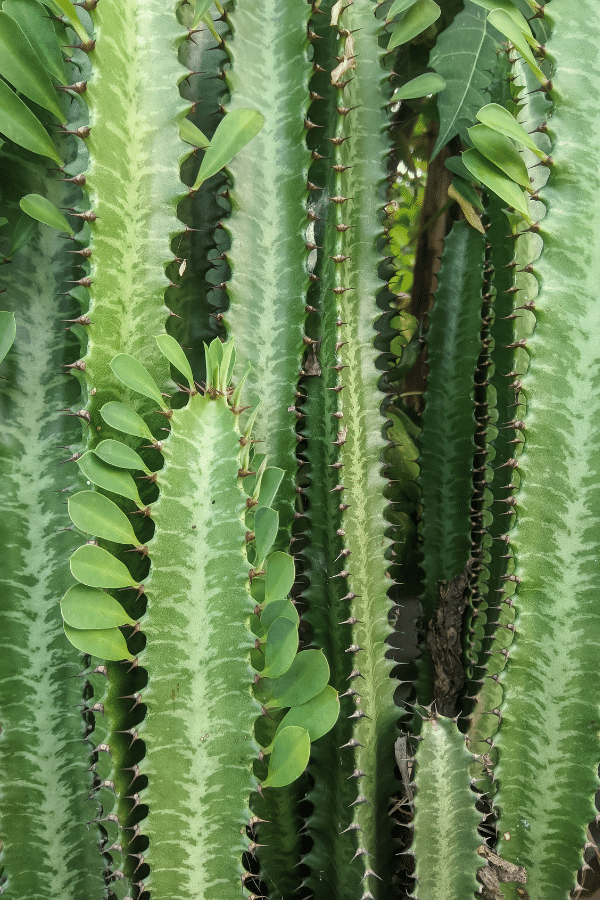
African Milk Tree History
Central Africa native Euphorbia Trigona, or the African Milk Tree, is a unique, vigorously growing succulent. Some cultivars such as ‘Royal Red’ may seasonally present with dramatic colors and accents. This lush green, rapidly growing plant also goes by cathedra cactus, friendship cactus, good luck cactus, and candelabra cactus.
African Milk Tree Identification
The African Milk Tree, although often called a cactus, is a succulent that has unique triangular stems with ridges. Ridges are thorned and produce tear-shaped leaves. New foliage will be a light green hue.
African Milk Tree Growth Facts
The African Milk Tree is exceptionally fast-growing and will likely need extra assistance such as staking to prevent it from becoming top heavy and toppling over due to its shallow root system.
How Big Does an African Milk Tree Get?
Euphorbia Trigona can grow up to 9’ tall and 2’ wide. However, when cultivated indoors, it will likely not exceed 6 feet in height.
African Milk Tree Care
The dramatic size of Euphorbia Trigona leads to this succulent being desired by many garden enthusiasts. This plant will require pruning and may require staking to obtain the desired look. This succulent may quickly become top-heavy and fall over if not properly pruned.
African Milk Tree Soil
The African Milk Tree isn’t overly particular about its growing medium. However, the soil should have excellent drainage. A commercial potting mix with incorporations of perlite or a sandy soil will be a perfect growing medium for this plant.
African Milk Tree Fertilizer
Your Euphorbia Trigona will benefit from a monthly feeding of diluted liquid fertilizer during the spring and summer. However, do not feed your succulent during the fall and winter during dormancy and ensure that you do not overfertilize, which may lead to chemical burn.
African Milk Tree Watering
Euphorbia Trigona does not require much water as it’s a drought-tolerant plant. You should let the soil dry out entirely before rewatering. Depending on growing conditions, you will likely need to water once a week during the warm growing season and reduce the frequency in the fall and winter.
African Milk Tree Light Requirements
You should keep your African Milk Tree in bright indirect sunlight, such as from a southern-facing window.
African Milk Tree Temperature & Humidity
African Milk Tree, in its natural habitat, is accustomed to a hot, arid environment. However, it is also essential to note that this plant does not need additional humidity. Extra humidity within its growing environment may cause this plant stress, leading to disease or pest issues. Therefore, you may need to place your African Milk Tree away from your other humidity-loving tropical plants.
Repotting African Milk Tree
You should repot your Euphorbia Trigona every 1-2 years to ensure that there is enough room for its roots to anchor it down. Be sure to plant in a pot with drainage holes to avoid root rot. As this plant is highly toxic, you should always wear gloves when handling it.
African Milk Tree Maintenance & Pruning
As the African Milk Tree can grow very tall and has a small root system, pruning becomes necessary to prevent this succulent from toppling over from becoming too top-heavy. Always use gloves when handling this plant. Remove stems to keep the plant balanced using a sharp sterilized blade.
African Milk Tree Propagation
Euphorbia Trigona may be easily propagated from cuttings. Again, you should always wear gloves when handling this plant as it is incredibly toxic to humans. To propagate, remove the arms of the plant using a sharp, sterilized blade and rinse the arm until the cut end stops oozing sap. Allow the cutting to callus over for about a week. Plant the cutting into the soil at about 1 inch depth. Add gravel to the top of the container’s soil to prop the arm up. Place the potted cutting in a warm area out of direct sunlight. Roots should appear within a few months.
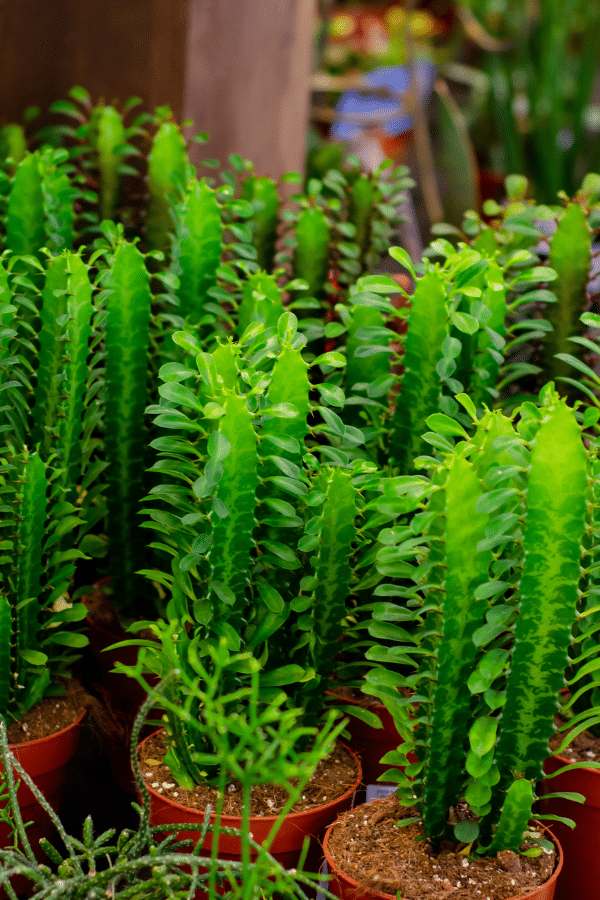
African Milk Tree Toxicity
Considered toxic, keep the African Milk Tree plant away from children and pets to avoid any problems with this plant. Wear gloves and wash hands when handling this plant.
Toxicity to Humans
Euphorbia Trigona is highly toxic to humans, and care should always be taken when handling the plant. Use protective gloves when pruning, repotting, or propagating. The sap from this plant may cause convulsions, blisters, severe irritation, and other adverse effects.
Toxicity to Cats & Dogs
This plant is toxic to pets and should never be ingested. However, if you suspect your pet has consumed any portion of this plant, contact your veterinarian or animal poison control immediately.
African Milk Tree Problems
African Milk Tree Leaves Turning Yellow
When leaves of the African Milk Tree turn yellow, it is typically due to insufficient lighting or watering issues.
African Milk Tree Leaves Turning Brown
Foliage of the African Milk Tree dying is typically indicative of either the plant being placed in too direct of sunlight or overwatering.
African Milk Tree Diseases
While healthy African Milk Trees are generally disease-resistant, they may still become susceptible to fungal issues due to overwatering. Cork disease and root rot are common occurrences in overwatered African Milk Trees. Ensure that you don’t overwater and cut any infected stems off the plant.
African Milk Tree Pests
The African Milk Tree can become susceptible to common indoor houseplant pests, especially if it is in bad health. Pests such as mealybugs, thrips, spider mites, and scale all can become a nuisance for this plant.

